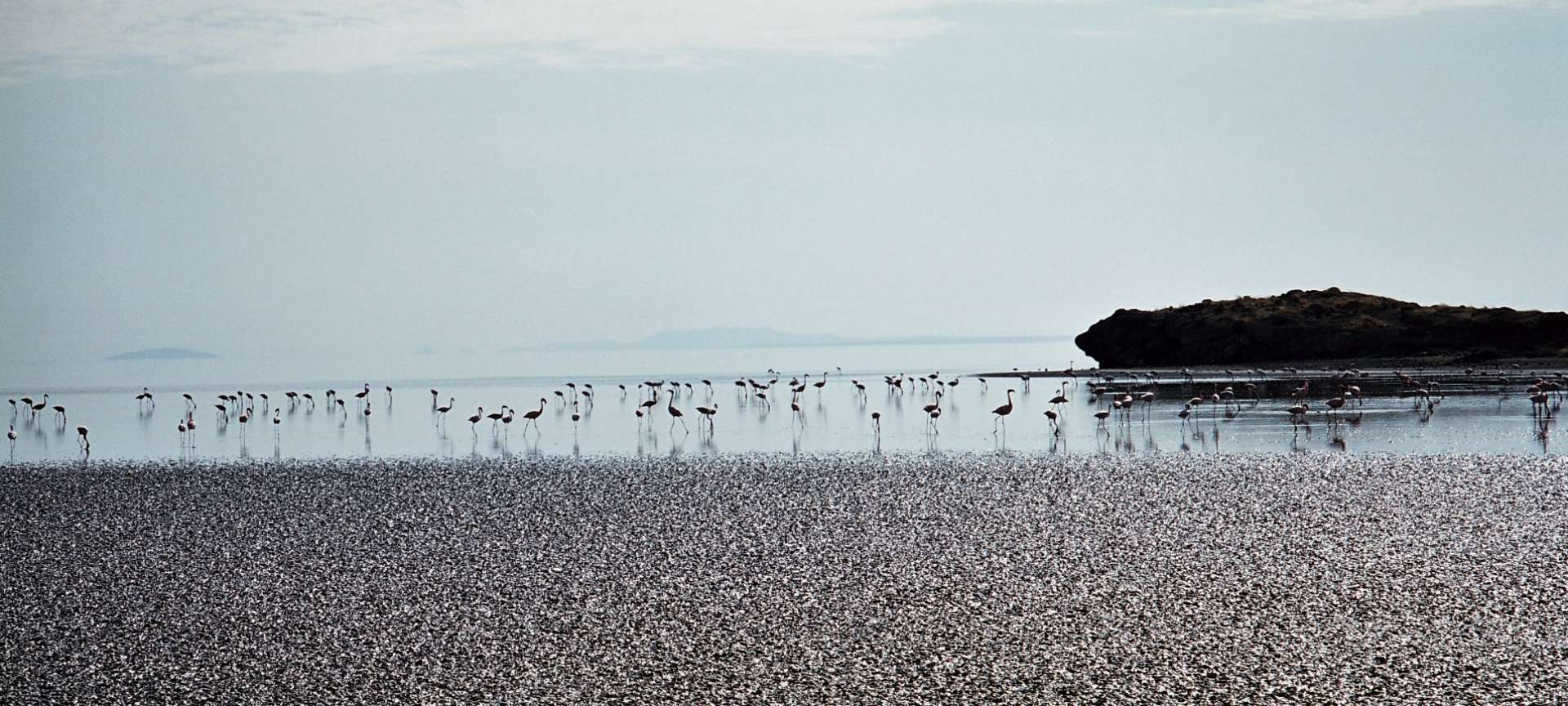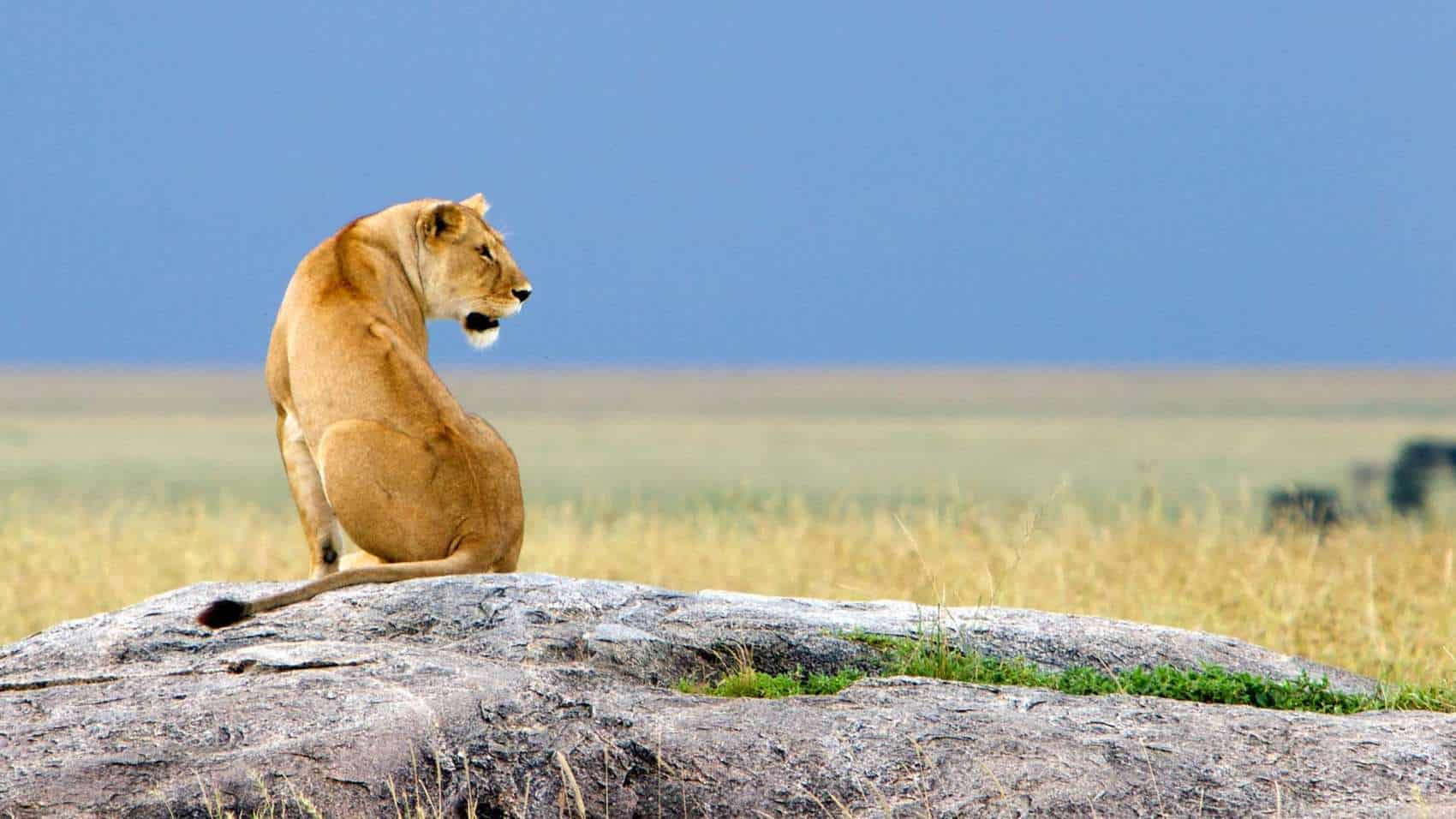
Set within the Rift Valley on the eastern border of the Ngorongoro Conservation Area, Natron is perhaps the most starkly beautiful of all the Rift Valley lakes south of Turkana. Almost 60km long but nowhere more than a metre deep, this primordial alkaline sump is renowned for its caustic and unusually viscous waters, which are enclosed by a crust of volcanic ash and salt, as well as a few isolated swamp patches fed by bubbling hot springs. There is some large wildlife in the area, but Natron’s main faunal claim to fame is as the only known breeding ground for East Africa’s 2.5 million lesser flamingos, which congregate at an inaccessible part of the lake between August and October. Natron also attracts up to 100,000 migrant waders during the European winter. The main attraction close to the Natron is Ol Doinyo Lengai, the Maasai ‘Mountain of God’, a textbook volcano that rises more than 2km above the surrounding Rift Valley floor to an altitude of 2,960m. Probably the most active volcano in East Africa, Lengai has erupted at least a dozen times in the past 150 years, experienced almost continuous low-key activity over the last past century and a half, the most dramatic in recent years being over 2007, when it emitted an ashen steamy plume that travelled almost 20km downwind. The steep ascent of Lengai, ideally undertaken overnight to avoid sun exposure on the black shadeless slopes, is a popular hike with fit and adventurous travellers, at least when the volcano is sufficiently placid. It should only be undertaken with an experienced local guide, ideally leaving shortly before midnight to reach the crater rim for sunrise.






















